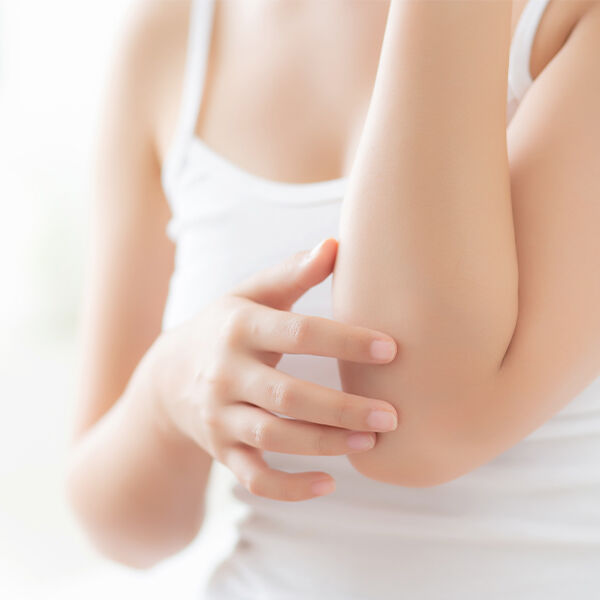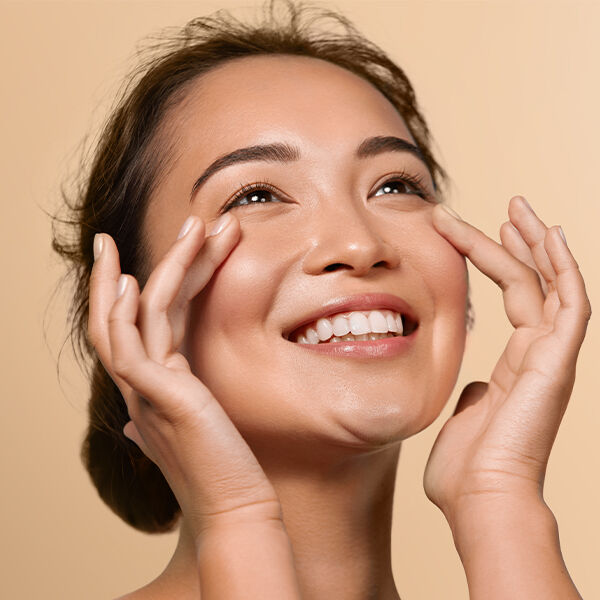
What Is Eczema & Care Tips: A Beginner’s Guide
Eczema affects millions of people around the world. Luckily, there are steps you can take to help manage some of your eczema symptoms from dry and itchy skin to redness and irritation. Let’s take a look into eczema - what it is and how you can help manage this skin condition.

What is eczema?
Eczema refers to a general group of conditions that cause dry, itchy skin as well as inflammation and redness or discoloration.
Over 30 million people in the US, including both adults and children, are currently living with eczema and around one in ten US citizens will be affected by the condition at some point in their life.
Dry, itchy, and inflamed skin are common symptoms, with more severe symptoms including cracked, scaly skin and blisters. If you have eczema, you also have an increased risk of developing skin infections because the condition affects your skin barrier, so it doesn’t function as well as it should.
What causes eczema?
There are several causes of eczema and these are thought to include a mix of your genes, environmental factors, and your immune system.
One common genetic mutation seen in people with eczema is a mutation that affects a protein called filaggrin. Filaggrin plays an important role in keeping your skin barrier healthy. A filaggrin mutation means your skin loses moisture, and your skin provides less protection against allergens, irritants, and bacteria.
It’s thought that environmental factors are also responsible for the increasing number of people who have eczema. Daily exposure to irritants, harsh climate factors, airborne pollutants, and tobacco smoke are thought to trigger or exacerbate eczema.
Some people with eczema have an overactive immune system that is triggered by something inside or outside the body. This results in inflammation which damages your skin barrier and causes eczema symptoms, such as dry, itchy skin. It’s not fully understood why this immune response happens.
Common areas of the body affected by eczema
Eczema symptoms come and go - sometimes your eczema may be mild or clear, and other times it is more severe. When symptoms worsen it’s called a 'flare-up'.
Eczema can affect different parts of your body. Babies are more likely to get eczema on their cheeks, arms and legs, whereas teenagers and adults are mostly affected on the hands and feet, backs of knees, insides of elbows, and the back of the neck.
For more information on the signs and causes of eczema, watch our video with dermatologist Dr. Peter Lio.
Different types of eczema
There are seven types of eczema, so let’s take a quick look at each one.
Atopic dermatitis is the most common form of eczema in adults and children and typically begins during the first six months of your life. It takes the form of dry skin and painful, itchy rashes.
Contact dermatitis, which often occurs on the hands, is triggered by something making contact with your skin and causing irritation or an allergic reaction like an itchy rash. Your skin may also burn or sting and you may develop hives or fluid-filled blisters.
This appears as a yellow or red rash that causes scales. The rash often appears along your hairline
and scalp although it can appear in other areas.
The most common symptoms of this type of eczema are very small and itchy blisters on your hands or feet.
More common in middle-aged, the main symptom is the appearance of round lesions on the skin.
This form of eczema is characterized by patches of itchy violet or red skin. Itching may become more intense when you’re relaxing or in bed.
This eczema is confined to the legs and is caused by poor circulation. Fluid pools under the skin of the ankles and lower legs leading to swelling and red, itchy, scaly skin.
How to manage your eczema-prone skin
Some types of eczema may need treatment with medication, and you should speak to your doctor if you have any concerns about your eczema symptoms. However, there are some lifestyle and skincare steps that you can take to help manage some eczema-prone skin signs such as dry and itchy skin.
Here are a few things you can do:
Moisturize your skin regularly and after bathing. Look for products such as Cetaphil Eczema Restoraderm Flare-Up Relief Cream that not only moisturizes your skin, but is clinically proven to help repair your damaged skin barrier. It’s recommended that people with eczema-prone skin use a fragrance-free moisturizer and apply it while the skin is still slightly damp as this can help to lock in moisture.
Include sunscreen as part of your daily skincare routine to protect your skin against sun damage and further damage to your skin barrier function by UV rays such as Cetaphil Sheer Mineral Broad Spectrum Sunscreen SPF 30.
Enjoy a short 5 to 10 minute soothing lukewarm bath. A short bath can help to hydrate your skin and clean away any crusts, scales, bacteria or irritants.A gentle cleanser can be used like Cetaphil Flare-Up Relief Body Wash, which is a creamy wash that can help soothe your skin and repair your skin barrier.
Resist the urge to scratch. Scratching worsens the condition and can cause wounds and lead to infection.Instead, use products that can help relieve itchiness, like Cetaphil Restoraderm Eczema Itch Relief Gel that comes with a cool-touch applicator to instantly soothe your skin.
5 commonly asked questions about eczema
Here are some of the most frequently asked questions about eczema – and their answers.
A: No. You can't catch eczema from someone else.
A: It’s possible, but everyone’s experience of eczema is different. While many children outgrow eczema, it can reappear in adulthood. Eczema can develop in adults too, although it’s not as common as developing it in childhood.
A: There is no cure for eczema, but by avoiding your triggers, using prescribed medication if needed, maintaining a good skincare regime, and using products that are specifically designed to help manage eczema you can help manage your symptoms.
A: It's important to know your triggers so you can manage some of your symptoms and reduce the number of eczema flare-ups you experience, but it’s almost impossible to prevent all eczema
breakouts.
A: Research shows that certain foods could trigger eczema flare-ups in some people. These tend to be foods that have a high nickel content. They include beans, lentils, peas, soy, shellfish, processed meats, chocolate, nuts, seeds, black tea, and canned goods.
The bottom line
If eczema is taking its toll on your life then there are things you can do to help improve your skin condition. With some simple lifestyle changes, the right skincare products and learning about eczema triggers you could be well on your way to taking control of your eczema-prone skin. You should always speak to your doctor if you have any concerns about your eczema-prone skin signs.










